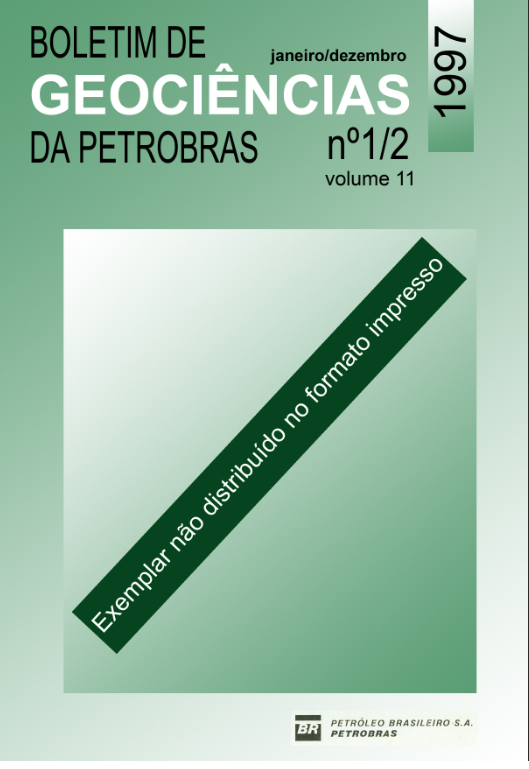Biostratigraphic and Paleoclimatic zoning of upper quaternary sediments from the Campos Basin Slone, RJ, Brazil
Abstract
Classic methods to analyze the post-Pliocene climatic changes were applied to samples from the Campos Basin. Twenty-six samples were piston cored from the sloping bank, and 1 306 samples were collected from three continuously cored drill holes. A selection was made among planktonic foraminifers indicating warm and cold waters and profiles were plotted and their percentages generated paleoclimatic curves. The comparison of these curves with those by Ericson & Wollin, permitted the identification of several glacial and interglacial intervals, and the age determination of the main climatic events that took place in the Campos Basin slope during the last 145 to 150 thousand years of the Upper Quaternary. Based on the frequency variations of the Globorotalia menardii s.l., Globorotalia inflata and Globorotalia truncatulinoides, complemented with observations on the disappearance/reappearance of the Pulleniatina complex, it was possible to subdivide the Z (Holocene), Y and X (Pleistocene) zones of the long cores (drill holes), into 15 subzones (Z1, Z2, Y1, Y2 and X1 to X11). With this result it is possible to refine the correlation exercises for the cores and improve the calculations of sedimentation rates for these sections. The piston cores, relatively short, were useful to establish precisely the Pleistocene/Holocene boundary for many areas of the Campos Basin slope, and calibrate the bio-horizon where the Pulleniatina obliquiloculata disappeared. The disappearance of the Pulleniatina complex within the median section of the Y Zone establishes an age of approximately 42 000 years, and the disappearance of the Globorotalia flexuosa within the top portion of X Zone, indicates the end of the last interglacial period (84 000 years). This collection of data, when correlated with Bolli & Premoli Silva’s biostratigraphic zoning, shows that the sampled sediments are located in the upper portion of the Globorotalia truncatulinoides truncatulinoides Zone. The longercores reached the Pleistocene Globigerina calida calida (part) and Globigerina bermudezi subzones and the Holocene Globorotalia fimbriata subzone, correlated with the paleoclimatic Pleistocene W (part), X, Y zones and the Holocene Z zone The piston cores did not completely cross the Globigerina bermudezi Subzone (Zone Y). Some of them reached the Pulleniatina obliquiloculata datum (40/42 000 years) but none reached the top of Zone X (84 000 years).
Downloads
Published
Issue
Section
License
This license enables reusers to distribute, remix, adapt, and build upon the material in any medium or format, so long as attribution is given to the creator. The license allows for commercial use.



